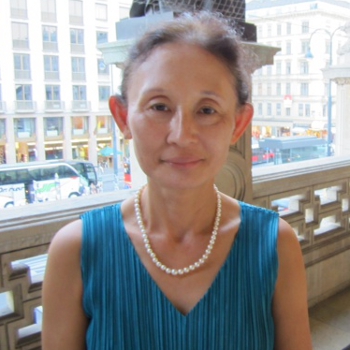La clemenza di Tito was written in the final year of Mozart’s life and is lesser known than Die Zauberflöte, composed in the same year. Commissioned for the occasion of the coronation of Leopold II as King of Bohemia in Prague, the opera did not enjoy an immediate success. The score, however, is a magnificent representation of Mozart’s genius, with arias, duets and ensembles woven with choruses with seamless continuity and inevitability. The Met’s revival of the opera seria with Jean-Pierre Ponnelle’s 1984 production scored a major success on opening night with a fine ensemble of singers and Met Opera musicians, led by an excellent conductor, Lothar Koenigs.
Koenigs’ approach emphasizes the narrative flow of the score without sacrificing individual showpieces. Beginning with a grand overture, he created an atmosphere of solemn, yet elegant and lithe musical theater for the story of Roman Emperor Titus, who is torn between his public duties and private emotions. While there were standout performances by individual musicians for continuo, cello by David Heiss and harpsichord by Brian Wagorn, and solo performances on clarinet and basset horn by Inn-Hyuck Cho, the overwhelming impression was that of an orchestra playing as an organic whole, providing a scintillating background for soloists and chorus.
The Met assembled a superb ensemble of singers, with seasoned veterans mixed with exciting young talents. Ying Fang's Servilia was the embodiment of “beauty and virtue” as described in the libretto, exquisite in her all too brief scenes. Her creamy soprano flowed in effortless legato as she pleaded to Vitellia to confess her scheme to assassinate Tito in the aria, “S’altro che lacrime.” Her voice blended as a sweet counterpoint to Emily D’Angelo’s youthful and eloquent mezzo in their lovely Act 1 duet “Ah perdona al primo affetto” as they confess their love for one another. The future of Mozart opera seems bright with such young voices as this. Their stage presence was already that of a seasoned professional, and they both practiced the “less is more” school of acting, suitable for the music.
Joyce DiDonato was singing the central role of Sesto, Tito’s close friend who betrays him for his love of Vitellia. She has been a major interpreter of Handel, Mozart and Rossini for the last two decades. While she remains a captivating stage presence with a splendid technique, her voice tends to thin out in higher range, and her coloratura is not as fluid as might have been. Nevertheless, her musicality, style and commitment was on abundant display, and her two arias, “Parto, parto” and “Deh per questo istante solo”, both sung with Sesto’s heartfelt sincerity and devotion. As her voice soared in desperation and sadness, DiDonato brought down the house.
Soprano Elza van den Heever, a most versatile singer who seems at home both in lyric and increasingly dynamic repertoire, took on the challenging part of Vitellia, an angry and vengeful princess who is repentant in the end and wins Tito’s forgiveness. Appearing in a dramatic but awkward costume in the middle part of the opera, she negotiated the wide range of the role with aplomb and finesse, while she was most challenged in the lower register. Her high notes had both warmth and steel, and her Act 2 aria “Non più di fiori” was one of the highlights of the evening, as she expressed her conflicting emotion with melancholy and determination.
Surrounded by the four splendid female voices portraying private struggles of love and loyalty, Matthew Polenzani held his own as his lyrical voice was adding more gravitas appropriate to the title role. His Tito was portrayed as moral rock amid the chaos of his surroundings. He bore the pain of separation from his true love Berenice at the beginning, and gave up his two choices for empress to his friends with stoicism and maturity appropriate to a benevolent ruler. Christian van Horn was a nuanced and sympathetic Publio with his sonorous and authoritative voice. The Met chorus was in wonderful form, its members clearly enjoying working with the cast and the conductor.
The simple and old fashioned set, with large towers on both sides of the stage and steps in mid-stage, serves well for the opera as the backdrop is used to depict different settings. The backdrop is raised at times to reveal public spaces such as the port and arena. Singers are given plenty of room to enact private drama of the characters, and well directed by the revival stage director Peter McClintock. In fact, the static staging seemed to enhance the magical and deeply affecting score of Mozart’s late masterpiece.


